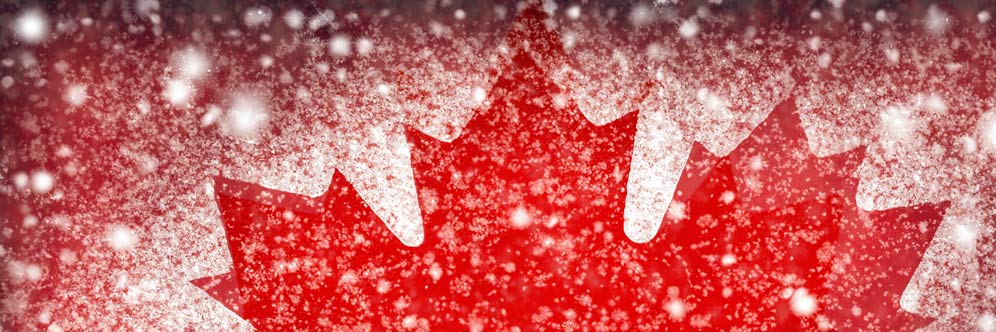Symbols of Canada: Unveiling the Multifaceted Aspects of a Nation’s Cultural Identity
In the vast tapestry of cultural diversity that makes up the vibrant nation of Canada, symbols stand as powerful representations of the country’s heritage, values, and history. From the iconic maple leaf to the regal Mountie, these symbols encapsulate the essence of Canada’s rich cultural heritage. In this comprehensive article, we delve deep into the significance of these symbols, exploring their historical roots, contemporary relevance, and their role in shaping the national identity.

The Mighty Maple Leaf: A Timeless Emblem
The Maple Leaf, with its distinctive shape and vibrant red hues, stands proudly as one of Canada’s most recognized symbols. Adorning the national flag, it symbolizes unity, tolerance, and peace. Its origins can be traced back to the 18th century when it was first adopted as a symbol by French-Canadian militias. Today, it embodies the core values that Canadians hold dear – diversity, inclusivity, and a deep love for nature.

The Majestic Mountie: Guardians of the North
The Royal Canadian Mounted Police (RCMP), affectionately known as the Mounties, have been an integral part of Canada’s history since 1873. Clad in their distinctive red serge uniforms and wide-brimmed Stetson hats, the Mounties represent not only law enforcement but also a sense of adventure and exploration in the vast Canadian wilderness. Their presence in parades, ceremonies, and even pop culture showcases their enduring significance in Canadian society.

National Flag: A Proud Identity
The Canadian flag, often referred to as the “Maple Leaf,” stands as a testament to the nation’s identity and values. Its design, with a single stylized maple leaf in bold red against a clean white background, flanked by two vertical bars of red, encapsulates the essence of Canada. However, beyond its visual impact, the Canadian flag holds a profound significance that reflects the country’s history, culture, and duality.
The Blue Canadian Flag and Its Evolution
The journey to adopting the now-iconic red and white Canadian flag involved various iterations and discussions about colors and symbols. The blue Canadian flag, sometimes referred to in historical discussions, represents a stage in this evolution. The flag’s eventual red and white color palette was chosen to avoid favoring either of the country’s official languages, English and French, which led to the elimination of blue from the design.
French Canadian Influence
The choice of red and white in the Canadian flag design carries a nod to Canada’s French heritage. The blue that once appeared in discussions was seen as potentially favoring the English-speaking population. However, the final choice of red and white reflects the unity of English and French Canadians, acknowledging both linguistic and cultural diversity.
The Original Canadian Flag: A Look Back
The original Canadian flag, known as the “Red Ensign,” featured the Union Jack in the canton, reflecting Canada’s status as a dominion within the British Commonwealth. The eventual shift to the iconic maple leaf design marked a defining moment in Canada’s quest for a distinct national identity, separate from British colonial symbolism.
Significance of the Maple Leaf
The maple leaf, the centerpiece of the Canadian flag, has deep-rooted cultural significance. Its association with Canada dates back to indigenous peoples who recognized the maple tree’s importance for sustenance and trade. The maple leaf’s prominent placement on the flag symbolizes the nation’s natural beauty, resourcefulness, and the enduring spirit of its people.

Historical Context and Symbolism
The adoption of the maple leaf on the Canadian flag is not arbitrary. It emerged from a deliberate effort to create a distinct national identity that wasn’t tied to British colonial symbols. The flag’s design, featuring the maple leaf and its red and white color scheme, symbolizes Canada’s autonomy, unity, and peaceful international relations.
Cultural Significance and Unity
The maple leaf on the Canadian flag holds significance for all Canadians, regardless of their background or language. It’s a symbol of unity that transcends linguistic and cultural differences. The flag unites Canadians under a shared emblem that represents their homeland’s values, aspirations, and diverse cultural tapestry.
Legacy and Contemporary Relevance
Decades after its adoption, the Canadian flag remains an enduring symbol of the nation’s values and identity. Its simple yet powerful design continues to evoke a sense of pride among Canadians, both at home and abroad. The flag’s red and white colors and the unmistakable maple leaf serve as a visual reminder of Canada’s commitment to inclusivity, diversity, and peaceful coexistence.
Maple Leaf on the Montreal Canadiens Flag
The significance of the maple leaf extends beyond the national flag. It’s prominently featured on the Montreal Canadiens’ team flag, signifying the team’s deep connection to Canadian identity. The Montreal Canadiens are not only a hockey team but also a cultural institution that celebrates Canada’s passion for the sport and its role in shaping the nation’s identity.
Totem Poles: An Indigenous Artistic Marvel
Totem poles stand as towering testaments to the cultural diversity of Canada’s Indigenous peoples. These intricately carved wooden structures narrate stories, histories, and spiritual beliefs of various Indigenous communities across the country. From the Haida to the Kwakwaka’wakw, each nation’s totem poles are a vibrant reflection of their unique heritage, bridging the past with the present.
The Resilience of the Inuksuk
Inuksuk, a stone landmark constructed by the Inuit people, serves as both a practical tool and a cultural symbol. Traditionally used as navigational aids and hunting markers, these stone formations also represent the resourcefulness and adaptability of Indigenous communities in the harsh Arctic environment. Inuksuit (plural of Inuksuk) remind us of the deep connection between humans and nature, a relationship that has sustained Canada’s Indigenous populations for generations.
The Iconic Hudson’s Bay Point Blanket
The Hudson’s Bay Point Blanket is not just a cozy accessory; it is a living relic of Canada’s fur trading past. With its distinct striped pattern and warm woolen texture, the blanket has become a recognizable representation of Canadian heritage. It’s a tangible link to the early days of European exploration and trade that played a pivotal role in shaping the nation’s history.
The Spirit of Hockey: Binding a Nation in Frozen Glory
No exploration of Canadian symbols would be complete without hockey. Often referred to as Canada’s national pastime, hockey is deeply ingrained in the cultural fabric of the nation.

A Sport Woven into the Fabric
From backyard rinks to professional arenas, the sport unites Canadians from coast to coast, fostering a sense of community and pride. The fast-paced game mirrors the country’s diverse landscapes and the resilience of its people.
Heroes on Ice: Iconic Players
Throughout the decades, hockey has produced legendary players whose names are etched in the annals of both sports history and Canadian culture. Names like Wayne Gretzky, Bobby Orr, and Mario Lemieux are not only synonymous with the sport but have also become embodiments of the nation’s sporting spirit and determination.
The Roar of the Crowds and the Legacy of Glory
The electrifying atmosphere of a hockey game is unparalleled. The deafening cheers of passionate fans reverberate through arenas as they rally behind their favorite teams. The pinnacle of hockey glory, the Stanley Cup, is a coveted prize that represents the culmination of grit, teamwork, and unwavering dedication. The iconic trophy has seen its share of triumphs and heartbreaks, etching the sport’s indelible mark on Canada’s cultural landscape.
Poutine: A Culinary Delight
Delving into the realm of culinary symbolism, poutine emerges as a delectable treat that speaks volumes about Canadian cuisine. This indulgent dish, comprising crispy fries smothered in rich gravy and topped with cheese curds, captures the essence of Canadian comfort food. Its origin story is steeped in folklore, with various regions claiming ownership, but its popularity remains widespread, reflecting the nation’s love for hearty and soul-warming dishes.
In the journey through Canada’s cultural symbols, we’ve uncovered a multi-dimensional narrative that weaves together history, diversity, and resilience. These symbols stand as more than just representations; they are living embodiments of Canada’s past, present, and future. From the timeless maple leaf to the savory delights of poutine, each symbol adds a unique thread to the intricate tapestry that is the Canadian identity.
